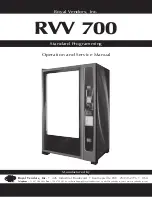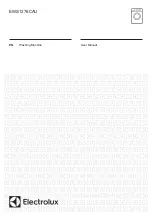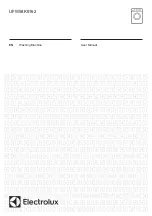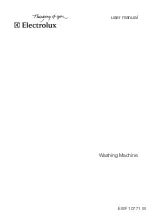
BNP
®
6012 and 7212 SUCTION BLAST CABINETS
Page 27
© 2019 CLEMCO INDUSTRIES CORP.
www.clemcoindustries.com
Manual No. 27723, Rev. B 04/19
8.0
TROUBLESHOOTING
WARNING
To avoid serious injury, observe the following
when troubleshooting:
Turn OFF the compressed-air supply,
bleed the supply line, and lockout and
tagout the air supply.
When air is required to check the controls,
always enlist the aid of another person to:
•
Hold the blast gun securely.
•
Operate the foot pedal.
Never bypass the foot pedal or wedge it in
the operating position.
Never bypass the door interlock system.
Follow all OSHA regulations, including
lockout and tagout procedures.
8.1
Poor visibility
8.1.1
Dirty filter cartridge(s). Pulse cartridge and
empty dust container regularly. Refer to the applicable
dust-collector manual noted in Paragraph 1.1.1 to adjust
pulse pressure and pulse sequence.
8.1.2
Exhauster motor not operating. Check voltage to
motor and motor wiring.
8.1.3
Check rotation of exhauster motor; the motor
should rotate as indicated by the arrow on the housing. If
it does not rotate in the proper direction,
lockout and
tagout power
and switch the motor leads, as shown on
the motor plate. Refer to Section 2.5.
8.1.4
Using friable media that rapidly breaks down or
using media that is too fine or worn out. Check condition
of media.
8.1.5
Dust collector-damper closed too far, restricting
air movement through the cabinet. Adjust static pressure,
per Section 5.4.
8.1.6
Cabinet air-inlet damper closed too far, restricting
air movement through the cabinet. Adjust damper, per
Section 2.7 and 5.6.
8.1.7
Reclaimer door open. Check door.
8.1.8
Hole worn in flex hose between cabinet hopper
and reclaimer inlet or between the reclaimer and dust
collector. Replace hose and route it with as few bends
as possible to prevent wear.
8.1.9
Obstruction in flex hose between the cabinet
hopper and reclaimer inlet. Inspect flex hose for blockage.
8.2
Abnormally high media consumption
8.2.1
Door on reclaimer open or worn door gasket. Air
entering the reclaimer around the door will cause media
carryover to the dust collector. Inspect door gasket. DO
NOT operate unless all doors are closed.
8.2.2
Dust-collector damper open too far. Adjust static
pressure, per Section 5.4.
8.2.3
Media may be too fine or worn out. Check
condition of media.
8.2.4
Using friable media that rapidly breaks down.
Check condition of media.
8.2.5
Blast pressure too high for the media, causing
media to break down. Check blast pressure and adjust
as needed or switch media.
8.2.6
Hole worn in reclaimer or leak in reclaimer seams.
Check entire reclaimer for negative-pressure leaks.
8.2.7
When using media finer than 180-mesh, the
reclaimer inlet-baffle of the may need to be removed.
Refer to Section 1.9.6.
8.2.8
Optional, externally adjustable vortex cylinder
out of adjustment. Adjust per Section 5.5.
8.3
Reduction in blast cleaning rate
8.3.1
Low media level reducing media flow. Check
media level and replenish or replace as needed.
8.3.2
Media-air mixture out of adjustment. Adjust
metering valve, per Section 5.3.
8.3.3
Reduced air pressure. This may be caused by
the pressure regulator set too low, a malfunctioning
regulator, a dirty filter element in the air filter, partially
closed air valve, leaking air line, or other air tools in use.
Inspect all items.
8.3.4
Blockage in media hose or gun. Blockage may
occur as a result of:
A damaged or missing reclaimer screen. Inspect
screen.
Heavy media flow. Adjust media flow, per Section
5.3.
8.3.5
Worn gun parts such as nozzle or air jet. Inspect
and replace all worn parts.
8.3.6
Worn media hose. Check hose for leaks and
soft spots. Replace worn or damaged hose.












































